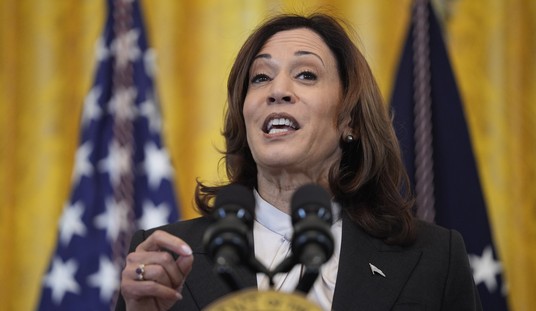Enough is enough.
Hurricane Florence was not caused by global warming. And even if global warming contributed the maximum amount claimed by any global warming alarmist, one meteorologist estimated it added at most one inch for every 30 inches that would have fallen otherwise.
Hurricanes are not more severe now or more common. Pulling out of the Paris climate accords – which hasn’t even officially occurred yet – had nothing to do with the storm’s severity; nor did any other of the moves President Trump has made to expand energy exploration, despite the Washington Post’s claims to the contrary last week.
On top of that, the world’s top weather professionals failed to anticipate the wall of the hurricane collapsing, the rapid loss of wind speed or the direction the storm would take once inland – even in the hours before the storm came ashore. How can their projections of weather years or even decades away be used as the basis for policy change?
But this is what was happening when President Trump took office. The Obama administration had vowed to make it too expensive to stay in the coal business. Its Clean Power Plan, since put on ice by the courts and condemned to the ash heap of history by the Trump administration, would have required so much spending on compliance costs that it would have been unaffordable to keep them open.
Coal still generates about 30 percent of America’s electrical energy. All renewables combined account for only about half that, and more than 40 percent of that comes from hydro, which the green left also opposes. Solar is 1.3 percent; biomass is 1.6, and neither they nor wind power would exist without massive government businesses, sold to us on the premise these measures, no matter how expensive, reduce global warming.
Recommended
Yet, the Obama administration was determined to do away with coal and replace it with renewables – the consequences for Americans trying to heat homes or power businesses notwithstanding. It wanted to impose a carbon tax to more comprehensively punish fossil fuel users – in fact, former U.S. Sens. John Breaux of Louisiana and Trent Lott of Mississippi are pushing such an effort now.
It tried to establish a continent-wide power concern in Africa that ran solely on renewable fuels, but the project ended after three years when the administration discovered the extensive solar panels it had purchased could not be connected to the continent’s woefully inadequate power grid.
Starting with his first State of the Union speech, in which he called for the end of the “war on American energy” and on “beautiful clean coal,” Trump has brought the fresh set of eyes this problem has needed for some time.
He not only has dramatically expanded the areas offered for energy exploration, which has set off a mini-economic boom on its own, he has embraced carbon capture and storage and high-efficiency, low-emission technology for producing coal efficiently, effectively and affordably.
He signed a deal earlier this year to provide for a new tax cut for projects that attempt carbon capture. He’s made a deal with Saudi Arabia to conduct joint research.
He reversed a decision made early in his term to cut funding for the Fossil Energy Research and Development Project of the U.S. Department of Energy, which does research and development on clean coal, and asked Congress for more than $500 million in funding this year. His Clean Coal Alliance seeks to export the technology Americans are developing.
He’s even sought to keep open on a limited basis some of the older plants Obama tried to eliminate to respond to energy emergencies, such as big storms and outages.
Trump sees coal as a strategic asset. It is helping developing countries, such as China and India, meet exploding demand. Others, such as Nigeria and Brazil, are asking the World Bank to reverse its policy, enacted in 2013, of refusing to finance coal projects because they need the energy and meet the policy’s exception of having “no feasible alternatives.”
It is giving European countries leverage in their generations-old tussle with Russia over energy prices, particularly for electricity and home heating. It gives the United States a source of electricity it will not run out of for 500 years or more at current levels of output.
This is not a game. Energy poverty has been called the worst poverty because it forms a highly regressive tax on living – almost everyone needs it and must pay the price dictated by world markets. Renewables make green leftists in the West feel good about themselves, but they are prohibitively expensive for poorer countries and leave humans without basic needs met.
The key, as the president realized long ago, is to be able to extract and use coal in an environmentally friendly way. We’re getting closer to that goal every day. This is no time to turn back.

























Join the conversation as a VIP Member